
Collecting money outside the Town Hall for Dr. Barnardo's Home in the 1920's - Photo courtesy Stuart Hall
I want this page to be about Folkestone people. Of course, there have been some famous people who have hailed from Folkestone, and they will be mentioned, and some not so famous, like my Mum - who will also be
mentioned! :-) (And she wasn't even born in Folkestone, she was born in Etchinghill). I will also put up photos that I have come across in which I feel the people are more the subject than the view behind them. If you know of someone that you think belongs on this page, and you have a photo, scan it and send it to me along with a little background information, and if I agree, up it will go.


Of course, we have to start with Folkestone's most famous citizen, Dr. William Harvey who was the first to understand how our blood circulates around our body. Above centre he is demonstrating his theory. As you know, Folkestone has a statue of him at the end of Castle Hill Avenue, facing out over the Leas, on the right is an old photo of it, showing one of Folkestone's first taxi ranks too! The statue is still there today, but the taxis have changed somewhat!

There is a separate page dedicated to William Harvey. If you would like to read more about him, click HERE
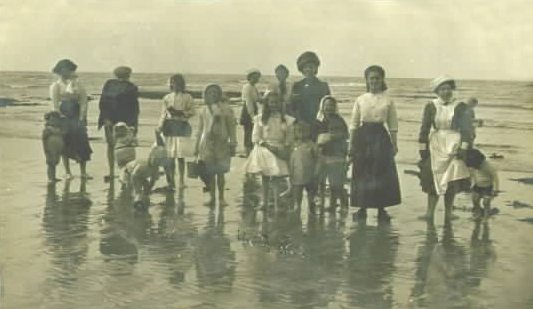
Here are some Folkestone people paddling in 1912. Note the game nanny on the right who is willing to get her feet wet for her charge!

Goat carts seemed to be all the rage in the early days. Here are two children with one, and what is that on the little girl's shoulder? Is it a black cat?

I snipped the picture above from a postcard of the Leas so you could get a closer look at that pram. Isn't it wonderful?
Here you can see people enjoying what I love to do each time I visit. They are having a plate of cockles or whelks down by the inner harbour. This photo dates from 1965, but you can still find a much bigger stall there in exactly the same place.

I don't know the location of this photo, but the name on the side of what looks to be a removal van is F. Hopkins.
I don't know the date of this one, but it shows the Folkestone Indoor Bowls Centre. I have a feeling that it is/was located on Cheriton Road, but I stand to be corrected on that one.

I listed this one under the people page, because it shows people doing what many still love to do these days. They are playing golf down on the links which used to be located at the foot of the hills.
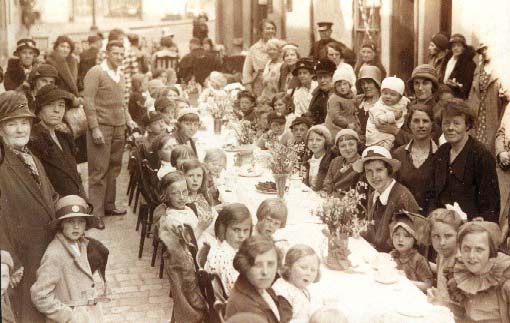
This photo was sent to me by author Alan F. Taylor, along with his permission to put it up here.
It shows a street party in North Street to celebrate King George V and Queen Mary's Jubilee on May 6, 1935.
Names he gave for this group include Mrs. Carey, Stan Taylor, Josie Brickell, Joan Tilly, Doreen Milton, Dorothy May, Cissie Sharp, Lilly Taylor, Lilly Sharp, Mrs. Care, Mrs. Milton, Mrs. King, Mrs. Starling, Mrs. Warman, Jessie Ma and Mrs. Jenner. Lots of fishing industry names in there!

This 1924 picture shows children and adults crab hunting at low tide. In the background you can see the Metropole and Grand Hotels up on the Leas.

I am not absolutely sure about this one, so maybe one of you can help. But I think it might be of a royal visit to Folkestone, and that could possibly be the Town Hall behind.
On the other hand, I could be completely wrong!

The card says:
'Souvenir from St. Margarets, Folkestone. Empire Day 24th 1916.' Which must have been St. Margaret's school which can be seen on the 'Buildings' page
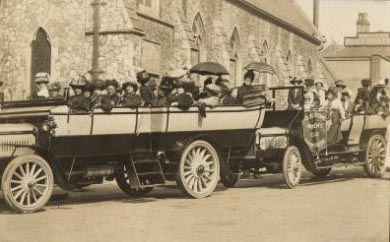
I bet you didn't know that Folkestone had a Suffragette movement did you? Well, these were the Suffragette Folkestone Womens' Co-op Guild.
On the building top right, an advertisement can be read for Crouches Wallpaper.

Now here is a man who has done a lot for Folkestone in my opinion, and has had to fight almost as hard for it as the suffragettes did for our vote.
His name is Charles Newington, and he designed and built (with the help of the Gurkhas) the white horse which now graces the Etchinghill escarpment. I have a page dedicated to this, so if you would like to read more, please click here:The Horse on the Hill

I told you I was going to put up a couple of photos of my Mum, Anne Brown! Here she is standing outside the Ensign Cafe, 42 Tontine Street, which she owned in the 50's.
My grandfather made and painted the sign above her head. He was a wonderful artist. The sign was in a hunter green, and stayed looking brand new for years. It's gone now, I suppose someone threw it out, what a shame! The one they replaced it with was nowhere near as nice.
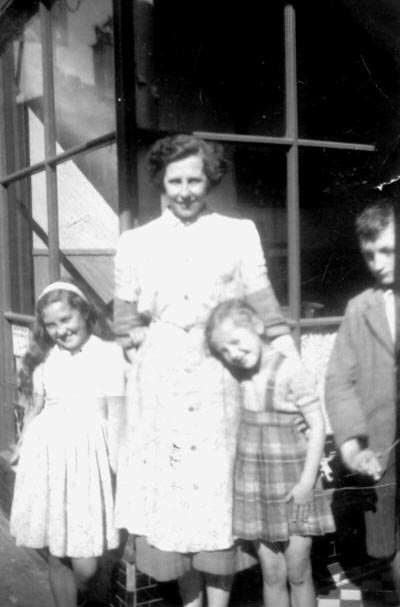
This is myself on the left, my Mother, and younger sister Pat standing in the doorway of the Ensign. I have no idea who the boy was, just somebody who wanted to get into the picture I guess!
Weren't we adorable? Ha ha!!

Here are some people sitting near what we used to call the Little Sands, just to the west of the East Head. We used to often go down there as it wasn't as crowded as the East Cliff Sands - of course, there was a good reason for this - with this section full of fishing boats, you got all sorts of undesirable stuff washing up onto the shore! It was pretty smelly too! I don't think it's as bad these days, not as many fishing boats, and maybe they don't throw everything over the side now.

Here are some people who had no time to sit around on any of the beaches. They were the workers at the Sanitary Steam Laundry in Cheriton, and the year was 1924. You can see the outside of this business on the 'Buildings' page, and a couple more photos on the 'Cheriton' page.




I promised you some famous people who either lived or visited Folkestone frequently, so here we go:
King Edward Vll, and his mistress Alice Keppel stayed at the Grand Hotel, in fact there is still a bar there named Keppels.
He would often have his wife along on the same visits. Alice's husband George was also well aware of what was going on, and turned a blind eye.
Alice was the great great grandmother of Camilla Parker-Bowles - talk about history repeating itself!.

Hattie Jacques of the Carry On films was born in Sandgate in 1929.

and Michael Bentine of The Goons and The Bumblies lived in Folkestone as a child during the 20's - 30's

T. S. Elliot spent some time in Folkestone recuperating from an illness.
H. G. Wells lived in Sandgate for 20 years, shown left and right, outside Spade House, his home there. This is where he wrote Kipps, which was based on his unhappy life as an apprentice draper.
Spade House is now a Grade 11 listed building, and is currently being used as the Wells Nursing Home.


CharlesDickens came to Folkestone many times. In 1853, he stayed for a few days holiday at the Pavilion Hotel. He was engaged at the time in writing 'A Child's History of England', and the town appears as Pavilionstone in his essay 'Out of Town' from the collection (Reprinted Pieces).
Returning in the summer of 1855 he rented number 3 Albion Villas, "a pleasant little house with the sea below and the scent of thyme sweetening the breezes from the downs". Although working furiously on the beginning of his novel Little Dorrit he found time for "swarming up the face of a gigantic and precipitous cliff" and could be seen many a day "from the British Channel, suspended in mid-air with his trousers very much torn at fifty minutes past 3pm".

Robert Morley spent some of his early childhood in Folkestone. Moving a few times, but he talks fondly about living in the Leas area with a string of governesses, whom he and his sister would terrorise.
He says in his autobiography 'A Musing Morley', "If there's one thing young people lack today, I am afraid it is Folkestone standards. It may well be what's wrong with the country. Who today rides in a Bath chair? 'I think,' the doctor would say, soon after the spots disappeared, the rash faded, the temperature subsided, 'I think he could go out for a little, in a Bath chair.' And in a bath chair I went. The very best Folkestone Bath chairs had folding mahogany shutters with windows through which one looked out on to the patient back of the attendant, silently plodding ahead. With the shutters drawn one was insulated from the noise, a silent world with the delicious uncertainty that one might have suddenly become stone deaf. It was necessary sometimes to open the shutters and shout, just to reassure oneself.
|
You can read Robert's views on the Folkestone lifts on the Lifts page.
I believe June Brown, whose biggest claim to fame is playing Dot Cotton in East Enders owns or owned a house on Earls Avenue. I don't know if this is the same house, but I came across this article, talking about strange encounters:
June Brown has had other strange ghostly encounters worthy of the X-Files. For some years June lived with her second husband Robert Arnold in an old, somewhat spooky, house in Folkestone, Kent .
It all started when objects started to move around the house by themselves."We quickly realised that we had a very helpful ghost on our hands. One day I was in the kitchen preparing a dinner party for my daughter and a cooking utensil went missing.
"I said out loud 'Where's that blasted spoon?' And the next second a pan lid rattled on the other side of the kitchen. I walked over to the pan and lifted up the lid and there was my spoon!"
June and Robert were convinced that it was an uninvited phantom guest that was helping June with the chores. And when June's young daughter Sophie experienced similar strange occurrences it was the last straw. To know for certain they did some research.
"We discovered a previous occupant of the house was an old lady who died. Her body wasn't found for some time.


OK, I am pushing things a little here. Lily Savage/Paul O'Grady doesn't live in Folkestone, but he did have a house in Aldington, which is very nearby! Paul, who sadly died in 2023, is more recently known for his own show, and also 'For the Love of Dogs'
And rumour has it in Folkestone that Paul bought his house from Vic Reeves of the Reeves and Mortimer fame.
Vic's real name is Jim Moir.

Reeves & Mortimer
John Logie Baird, the father of television was of course born in Scotland, but there is evidence that some of his early experiments in television were conducted from the premises of 26 Guildhall Street, which he was renting in 1923, (presently occupied by a pet supplies shop). He transmitted to an address in Sandgate Road, which later became Triangles Cafe. There is a plaque to commemorate this at the Guildhall Street location.


Baird with his Nipkow disc television apparatus

OK, enough of the name dropping and back to the real people of Folkestone. This was the Folkestone Hockey Club in 1910.
Paul Seward, who puts me right on so many things, clarified this picture for me: He says "The photograph outside the Hockey Club is, I believe, is of the Folkestone Cycling Club, as there are a number of bikes in the pic and the attire of some is compatible with cyclists of the period. The "rope" around one man's neck would be spare tyres. The Cycling Club did not have their own premises, I reckon, as their AGM in 1914 was held at the Bouverie Arms.
So now we know - thanks Paul.

Sandgate was also home to illustrious author Jocelyn Brooke.
He lived with his parents, brother, sister and much loved nanny at 22 Radnor Cliff. His father was the owner of the well-known wine merchants in Sandgate Road, J.H. & J. Brooke. This was a solemn place more like a bank where the purchase of fine wines could be discussed. However the fact that one could theoretically buy a bottle of beer over the counter caused his father to be ostracised from the tea parties of Radnor Cliff as being in trade.
The previous paragraph was taken from the website:

People living in the Canterbury Road area may not recognise this face, but will certainly recognise his name. He is none other than the original Jesse Sellen - the butcher who used to be in business at 67 Canterbury Road, and whose name can still be seen on the side of that building.
This photo was sent to me by Linda Nicholson, his Great Granddaughter, who lives in France.
Jesse and Emma had three children, Albert Edward (Ted) who carried on the business after him, Lily Emma, and John. Linda tells me she is still in contact with one of John's children, a lady now in her sixties.
This photo was carried in Linda's Grandmother's locket, and as far as she is aware, it is the only one in existence, as Jesse's Granddaughter Flossie, daughter of Albert Edward, burned all the papers and photos after Jesse's death.
Thank you for sharing this photo and information with us Linda.
Linda was put in touch with me by Ian Martin, a distant relative of Jesse, who is trying to trace his family tree.

This is a photo I took of 3 Albion Villas in 2006. It has a plaque on the wall commemorating its most famous resident.

I received an e-mail from Dave Tooley, because he had just discovered that he had a famous relative. Here is what he said:
My Great Grandmothers sisters daughter (my 1st cousin twice removed) was a famous survivor of the Titanic sinking in 1912. Her name was Elizabeth Nye. She went on to become a founder member of the Salvation Army in New York.
She was the woman who caught the baby who was thrown into the lifeboat by a crewman seconds before the ship foundered.
Read here how she described the sinking in her own words:-
Elizabeth Nye, seated centre front row with her parents & siblings.
Photo courtesy Encyclopedia Titanica.

Now we get to some very interesting e-mails and photos that I have received from Steve Walker - an avid collector of Folkestone postcards, and someone who has pipped me to the post many times on e-bay!
The first photo he sent me is of his Grandparents, Edward and Elizabeth Sellen, who were bakers, not butchers this time! They are standing outside their bakery and confectioners shop at the end of Warwick Terrace, near the Junction Station. Between them is his mother, who was born in 1906, so the photo was probably taken circa 1910. The man standing next to the delivery cart was called Arthur and he worked for them for many years, delivering to their customers and helping in the bakehouse. His grandmother used to make the sweets. The shop is now a private house, although when he visited in 1985 it was a florists. No longer on the maps as Warwick Terrace, the building is on the corner of Folly Road and Morrison Road.
Now was Edward related to Jesse? I really don't know.

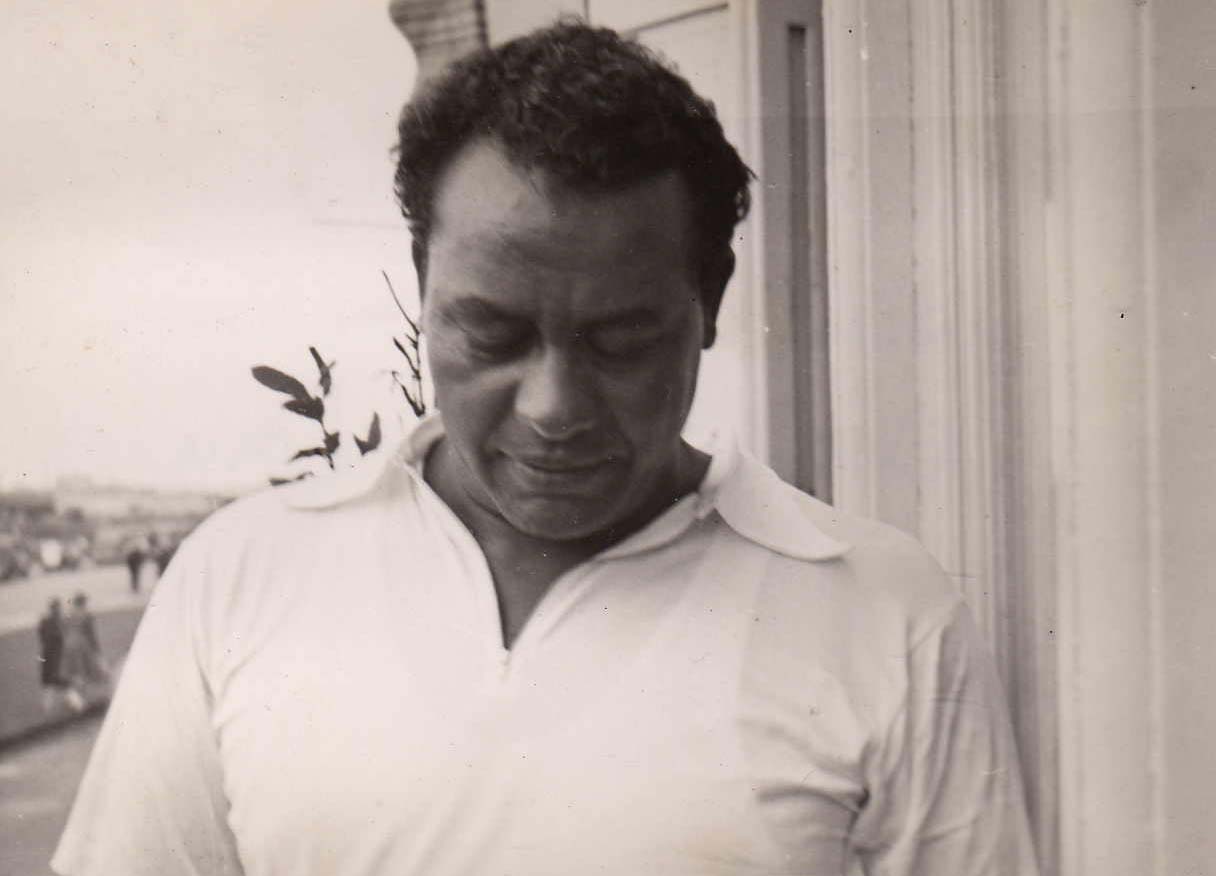
Steve snapped this photo of a throng of people waiting outside the Devonshire Hotel to catch a glimpse of the Channel Swimmers, most of whom stayed there. Steve was living in the hotel next door at 7 Marine Parade, and took the pic from his balcony. The gentleman above is named Hassan, who won the Channel swim in the year 1954. He was in the process of signing an autograph for Steve when this photo was taken.
I used to collect Channel swimmers' autographs too Steve, along with the visiting bandsmen up the Leas.
If you would like to read about Steve's memories of living in Folkestone, please check out the Folkestone Memories book below, you will find his recollections in the Archives on August 8th 2006.

Steve also sent this photo of Folkestone Corps Salvation Army Band 1924-25. Commandant & Mrs John Walker, Commanding Officers, centre front (his paternal grandparents. His maternal grandfather, Edward Sellen is 3rd from left second row and his father, Luther Walker is 3rd from left third row. Bert Clarke, 2nd from right, third row lived to over a 100 years old, and could still put names to everyone in the band!

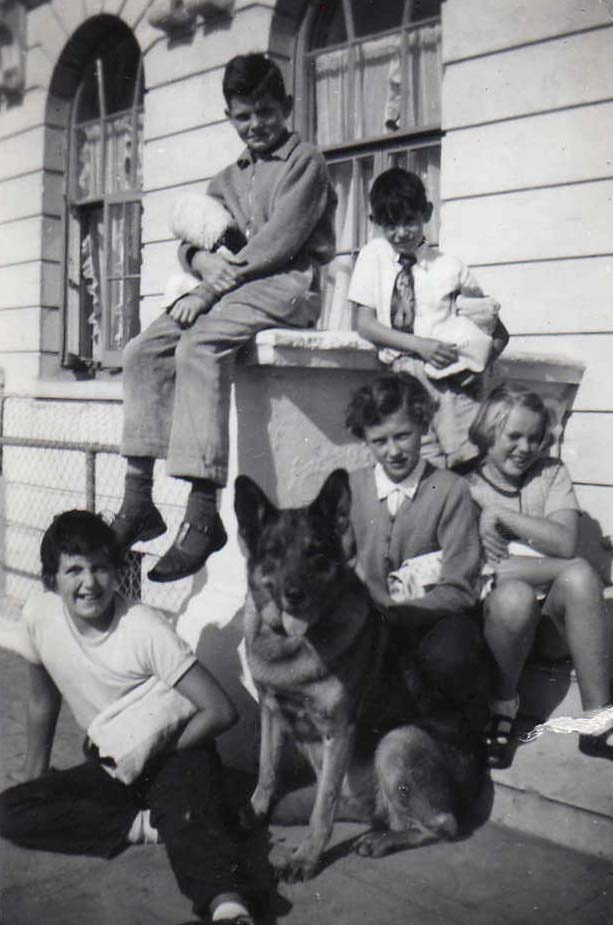

More from Steve, above he is standing outside 7 Marine Parade with a friend, you can see the Royal Pavilion Hotel in the background. In the middle, he tells me he is pictured with Channel Swimmer Sam Rockett's two children and dog outside his house, together with Janet Parham from No6 and Jennifer Sprake from No 10 Marine Parade.
On the right, is Steve again in the Folkestone Boys Brigade Band, circa 1956-7. ready to go on Church Parade. The Captain is George Hickmore who lived in , he thinks, Archer Rd, where the photo was taken. He later moved to Capel. Steve is on the far left. The boy in the grey suit is his best mate, Andy Arghyrou, whose parents owned George's restaurant in Tontine St. His older sister, Nina, was always considered to be the most beautiful girl in Folkestone by Steve and all his young friends. * We've found Nina! See further down the page!
Steve was saying he would love to get in touch with Andy again, so if anyone knows of his whereabouts, drop me a line, and I will pass the information along to Steve.
I knew of the Arghyrou's, as they lived in Tontine Street at the same time as me. I think my older sister Paula might have been friends with Nina.


Aren't these fabulous photos that Steve sent? On the left are his Grandparents, baker Edward Sellen and Maria & John Walker. Just look where they are walking! Right under the Victoria Pier.
On the right is Steve's Great Grandfather John Whittingstall, who was not only a fisherman, but also worked on the harbour.


Wasn't Folkestone a great place to grow up? Above is Steve taking a ride with his Aunt. Why on earth did they do away with those boats, they were so much fun.
In the photo below, Steve is with his family at the swimming pool. His mother was on the right.
Thank you so much for sharing these with us Steve! You will find a few more photos of Steve's scattered throughout this website.

Now we come to a couple of photos that are considerably older than Steve's. Above, we have a Boy Scout concert taking place in Folkestone. I don't know what the theme of it was, but I love Britannia standing resplendent at the back!
On the right, you can see a parade being led by Lord Kitchener on the white horse, and saluting is King George V, grandfather of Queen Elizabeth II. They are heading through Cheriton, as you can see the White Lion (now closed) in the background. Photo copyright Linda Paine.
If you have your own memories of Folkestone, be sure to share them with us by jotting them down in our book below. Warning though, at the moment, the Guestbook will only accept posts from a desktop or laptop computer, I have discovered it won't accept one from an Ipad, so probably not from a phone either.
This page updated
Noember, 2023

I bought this card purely because I was fascinated with the inscription on the tombstone, which was/is located in the Parish Church in Folkestone. It reads as follows:
In Memory of Rebecca Rogers who died August 22, 1688 aged 44 years
A house she hath its made of such good fashion
The tenant ne'er shall pay for reparation
Nor will her Landlord ever raise her rent
Or turn her out of doors for non payment
From Chimney Money too this Cell is free
Of such a house who would no Tenant be.
This makes me curious about the life of Rebecca Rogers, did she lead a hard life, always dodging the landlord? Was she evicted at some point? I have vaguely heard of a chimney tax, were you assessed according to the size or number of the chimneys on your home?
What a strange subject for a postcard at a high class seaside resort.
I have been told that this headstone has been moved inside the church, but it has always been locked when I have visited. I know it is open on Sundays, but never managed to get there.
Photo above courtesy Kinema

David Tomlinson.
Another David, who writes to me every once in a while, tells me he used to deliver newspapers to his parent's house. They lived off Shorncliffe Road, near the police station.
He says he caught a glimpse of the great actor a couple of times.

How about this for a wonderful Folkestone character? Alan Taylor sent me this photo of Timothy Daly. He was a well known rag and bone man around Folkestone. He died at the Union (St Mary's Hospital Etchinghill) aged 70 in April 1898.
It was said he could kick a man's hat off. This information came from George Marsh the photographer.
Thank you Alan, he definitely belongs on this page!
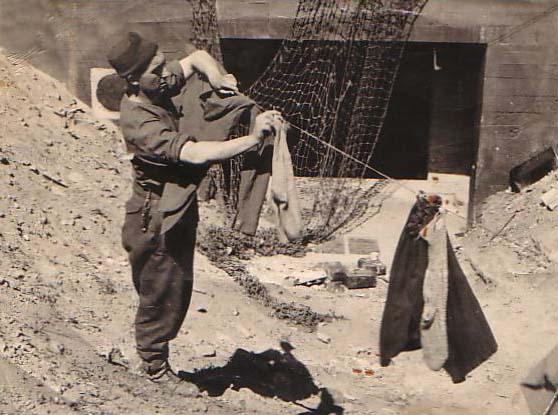
These three are from Mike Vernol. Here is what he says about the above two
"Couple of pictures of Folkestonians taken either 1953/54.
Both are sports representatives involved in the sports interchange in Middleburgh, Holland.
The one in the Middleburgh square is the basketball team - the team was originally all Hillside school members team started by Richard Steptoe (deceased) (No 12) when we were about 13/14 we were known then as Folkestone Stags - we played in a league at Shorncliffe Camp - initially we were the only kids all the other teams were soldiers and other adults - didnt do to well first season!
Were great thereafter.
The team developed and by the time this photo was taken were known as Folkestone Saints (cause When the Saints go Marching In was our signature tune) - the team/club is still in existence!!
The guy on the left is A. A. HERMITAGE (deceased) sports master at Hillside who initially advised and assisted in the teams development and later played a greater part.
No. 3 John Fuller (I think) No 8 (me) No 6 Robert Lee, front row No. 9 Alex Jeffrey, 12 Richard Steptoe, 11 Tom Saunders, 5 Eddie Blecher.
Sorry dont recall the others (at this time I had actually left the town to work in London and the others were newcomers).
The other photo is on the boat on the way - some of the Folkestone swiming team for the interchange. On the left Colin Swan, then Richard Steptoe, Keith Milton, Les Pittock and yours truly."
And here is what Mike says about the above photograph:
"Here is a very famous picture for you - taken on 22.6.44 in France - appeared as front page in the soldier magazine at that time as "Hanging out the washing on the Siegfried Line". In fact it was actually part of the Atlantic wall.
Its one of my uncles married to one of my mum's sisters (there were a few!!) R. P. TURNHAM (bob) - he was a butcher: after the war owned the butchers shop halfway down the High St - previously his dad who was an even more famous Folkestone butcher owned a butchers shop on the side of the town Hall.
My second job was delivering meat for him when I was about 13 until I left school - previously had been a baker delivery boy (on Sats) for Martins of Cheriton."

Here she is in her Salvation Army uniform, supplied to me by Mark Rose, who is also a member.

These were the Bouquets Folkestone 1936 Company who performed at the Marine Gardens Pavilion (now demolished)
I think this Girl Guide concert must have been held in conjunction with the Boy Scout concert shown further up, because there is Britannia once again. The scenery behind looks similar too doesn't it?

This was J. Carden Family Butcher. They sure believed in letting you know where your Sunday dinner came from in those days didn't they? Can you imagine the flies? I don't know where he was located.
This photo of the Fenchurch Street Christmas party was sent to me by Chris Long. I noticed in both this one, and the North Street party shown further up how clearly you can see each face, no matter how far back you look in the photo, must have been the same photographer. I also have to say though that that was one ugly Father Christmas! I would think those children had nightmares after meeting him!

Linda also sent me this photo that she took while visiting Folkestone to try to track down information on her ancestors. I believe this sign is still there on the side of 67 Canterbury Road. It reads:
Park Gate
Jesse Sellen
Family Butcher
Noted for Best
Home Fed Pork



These were not Folkestone people, but they were people, and they were in Folkestone at the time. They were the 6th Field Co. Div. Engineers and the 27th (City of Winnipeg) Battalion, who were stationed at Shorncliffe Camp at the time.
This baseball game took place at the Folkestone Cricket Ground on Cheriton Road during World War 1.
Unfortunately, the men from my adopted home town of Winnipeg were beaten, but apparently it was a very good game, and well attended.
My grateful thanks to Alan Taylor's son, who came across this article in a local Folkestone newspaper he was browsing at the library.
I have a website on Winnipeg too, and didn't know which one to put these pics on - so decided to put them on both!
This was the 6th Field Co. Div. Engineers at bat
|
And above, it is the turn of the Winnipeg team.

The photo on the left was sent to me by Jean Adams who says:
"This pic is of my husband's grandparent's shop in Bouverie Rd West (16). Not exactly sure when it was closed (must be at least 40 years) as his Aunt took it over after the death of Percy Webb."
Isn't that a great picture? I wonder what you could buy from the vending machines? Bubble gum? Sweets? Or maybe cigarettes?
Jean, I checked my 1958 Kelly's Directory, and the shop was being run by Miss M. E. Webb at that time, possibly your husband's Aunt?

Now here are a lot of Folkestone people. Well, men anyway. It looks like an outing of some kind, a church outing, or possibly a pub crawl? Didn't those Pullman charabancs carry a lot? I can count about 28 men in that vehicle!
Thanks go out to Alan Taylor for that great photo!

Here are some people using a very unusual mode of transportation. They are outside the Bathing Establishment getting a ride in a llama trap.

Here we have the business belonging to Frank Curtis, Purveyor of High Class meat at 5 Rendezvous Street. One has to wonder how high class the meat was, hanging out in the elements and the flies in the middle of summer. High - quite possibly! Did you know that Rendezvous Street once held the nickname of Butcher's Row? This was because of the amount of butchers shops in the area. There was also a slaughter house in Mill Bay.



The above two photos, and the obituary on the right was sent to me by Iain Crump, who is researching his family history.
Albert James Hart and his wife Emily were his paternal Great-Grandparents. Albert was very well known in Folkestone, hence the long obituary when he died. Above left you can see the delicious looking sweet shop which was run by Emily at 13 Guildhall Street, which was later Steddy's toy shop, the latest Google Street View, in 2023 shows it as a Massage business. The Harts owned it between 1908 and roughly 1914.
For some time Alfred was the Landlord of the Bouverie Arms in Cheriton, and also the Black Horse Inn, Hawkinge.
On the right you can see the two of them heavily dressed as was the custom for a visit to the beach in those days.
As you can read in the obituary, Alfred dabbled in many things from builder, to pub licensee, carpenter and town Councillor.
Incidentally, Iain is looking for a photo of Vye & Son when they were located on Rendezvous Street, as his Grandfather George Crump worked there in 1910. If anyone can help, please send it to Iain HERE

Below is a photo sent to me by Alan Taylor. He was responding to a query by a lady named Catherine Smissen, who was tracking an ancestor of hers by the name of F. Gilbert, a writer and designer who had these premises from between 1916-18 to 1940-47.
He also had a brother T.C. Gilbert who had an electrical and radio business at 26 Guildhall Street.
Alan's father served his apprenticeship there to become an electrician.
He told him that in 1924 John Logie Baird who invented the television was experimenting in the basement of their shop, as is mentioned above alongside the photo of John Logie Baird.
Also in the photo below is a delivery van belonging to Langleys florist in the Old High Street. Whether those people are connected to Langleys or F. Gilbert, I am not sure.
Catherine's Great-Grandmother, Fanny Martin Gilbert was living in Swiss Cottage at the bottom of the Road of Remembrance - or rather Church Slope as it was in those days at the time of her marriage to George Richard Peel at the Salem Chapel Folkestone on 4th July 1891. Salem Chapel was on the site of the Baptist Church, Rendezvous Street.
I received an e-mail from Matthew MacKenzie, telling me I am sadly lacking in photos of Folkestone during the 70's and 80's, which is very true. However, Matthew was more than willing to supply me with the following snaps, but please note that the copyright to these is owned by Ed Mackenzie. This is what Matt had to say about them:
"During the late seventies, my father, Ed Mackenzie, set up an activity holiday centre "Folkestone Activity Holiday Centre", which ran first from the West Beach - where the Rotunda used to be, and then from the Sunny Sands. This centre provided residential holidays with watersports for young people and adults. It ran until 1989. I also plan to set up a web site with the hudreds of old FAHC photos I have recently had scanned. If anyone would like to get in touch with me, please drop me a line using the following e-mail address: mat@m-d-m.com ".
.jpg)
.jpg)
.jpg)
.jpg)
.jpg)


Both left and right here are of Matt, one taken in the 70's at the their West Beach boathouse, and the other from 2006, when he tells me he had become a much better wind surfer.
Thank you Matt, these are wonderful photos.


One of Folkestone's most colourful characters throughout history has to be Jack (Chopper) Anderson, who was Town Crier from appx. 1910 to 1931. He wrote quite a few poems during that time, one of which is on the Military page on this website. He was also at odds with the Lord Radnor of the time, as you will see from the newspaper article below which was published August 27, 1911, copyright The New York Times.
HOW A TOWN CRIER OUTWITTED AN EARL
|
When Put Off the Beach at Folkestone He Hired a Boat and Used a Megaphone.
NOW DEFIES LORD RADNOR
|
Says the Beach May Belong to Him, but the Sea is England's-"Chopper" Anderson is Popular.
|
Special Correspondence THE NEW YORK TIMES.
|
LONDON, Aug. 18 - How an Earl has been "bested" by a town crier is told in telegrams from Folkestone.
"Chopper" Anderson, the town crier of Folkestone, is very popular with visitors, and wherever he goes when on duty a crowd of visitors follow him. The Town Clerk draws a salary running nearly into four figures, the Surveyor and Public Accountant's remuneration runs into handsome three figures, but the visitor knows little of these great men. With "Chopper", however, it is quite different. He receives no salary from the corporation. His privilege is the use of the town's bell. He has the privilege also of providing at his own expense a gold laced top hat and suitable uniform.
"Chopper's" remuneration is derived alone from his "cries" - lost, stolen, found, or strayed, etc. For each he charges a fixed sum. But "Chopper" is a born humorist, and he interlards his pronouncements with running commentaries, and even sometimes ventures into rhyme. Visitors laugh and the children especially follow him from point to point.
"Chopper", however, is not allowed to have things all his own way. Earl Radnor is owner of the foreshore and Leas undercliff, and it is here that thousands congregate. The boatmen, hawkers, and others, if they use the beach, have to pay tribute to the Earl. Last year, when Folkestone's crier with his bell attempted to inform visitors as to what was going on, he was turned off the sacred beach by the Earl's uniformed constables.
"Chopper", in full uniform, met a Morning Leader correspondent yesterday, and asked if he had heard about his megaphone. The Leader correspondent confessed he had not, whereupon "Chopper" said "I've beat 'em; I've beat 'em" He added that there were thousands on the beach the other morning, so he hired a boat, and got a man to row him for a mile or so along the shore. "I rang my bell", he said. "and then shouted my cries through a megaphone. And didn't the visitors stare! Why, ladies heard my voice up on the Leas, and they left off listening to the Blue Viennese Band in order to hear my cries.
"If they will not allow me, a Folkestonian, to walk along the foreshore, I defy them to stop me 'crying' on the high seas. The beach may belong to Earl Radnor, but the sea within the three mile limit belongs to England."
Both of the above photos were kindly supplied to me by Alan F. Taylor, and thanks also to Jackie who alerted me to the above newspaper article. Jackie's husband is a relative of "Chopper" Anderson.

The happy couple in this photo are the parents of David Santry, who has kindly allowed me to add it here. It was taken in 1963 outside the Central Station.
The shops in the background have caused me a bit of confusion, because my 1958 Kelly's Directory lists the Central Tobacco Co. at #102, right next door to #100 Howard's Greengrocers, which was on the corner of Brockman Road. So did Central Tobacco move one shop to the left by 1963, or did Howard's originally take the space of two shops? And what was that shop in the middle called before the sign was smudged? Maybe EastEnders, or Odds & Enders, or Shoe menders, or Mind benders, or Money lenders - I could go on, but will spare you!

How many people recognise their relatives in this one. They were the Folkestone & District Band of Hope Union. Band of Hope was a temperance organization for children right across the country, in fact in 1897 it was estimated to have 3,238,323 members who had signed the pledge to abstain from intoxicating drink in order to join. Many of their reforms are still law today, in that it is illegal to sell intoxicating liquor to children, and children should not be in areas of public houses where alcohol consumption is the chief feature.
If you would like to read more about this fascinating organization, which incidentally is still going today, with their focus more on drug use, please check this website: http://www.hopeuk.org/about-us/

And here is David himself in 1950 sitting outside the swimming pool down on the seafront.

If anyone belongs on this page, it should be St. Eanswythe even it it's not possible to have a photograph of her. Here is a little bit about the lady behind Folkestone's oldest church, St. Mary & St. Eanswythe on the Bayle:
Saxon Princess Eanswythe's father King Eadbald of Kent first built a chapel for her in 630 AD. It underwent many transformations as a monastery, a priory etc. suffered dissolution by Henry V111, rebuilt as a church, and destroyed by fire in 1216. Rebuilt again, and evolved into what you see here.
Several legends are told about St Eanswythe. Her story is that she chose not to marry and refused a Northumbrian prince as suitor when his pagan prayers failed a test she put to him and could not lengthen a beam required for the building of the church. Her own Christian prayers succeeded. Other legends include providing water for her convent by making it flow uphill from the stream a mile away, restoring the sight of the blind, forbidding the birds to eat the nun's corn.
I received an e-mail from Paul Seward, who answers my questions:
"Howards Stores was run by a Mr & Mrs Hughes. Saw their son Peter not so long ago. The stores occupied two buildings and the smudged sign read 'Tea Blenders and Coffee Merchants'”.
Above the tobacconists nearby was a hair stylists “Rosalie” run by Mr. & Mrs. Paine, who died recently."
I wonder if that was the same Mr. & Mrs. Paine who were very involved with the history of the Leas Cliff Hall, and in fact, Mr. Paine had a band that played there for many years? I met them once after they retired, but we only talked about the Leas Cliff Hall. Would love to know if they were the same people that owned Rosalie.

Sent to me by Carol Sage, this is a photo of her Grandfather standing outside his shop at 319 Cheriton Road.

Sent to me by Mike Vernol, this is what he says about it: "Dover Road school swimming school kids - I'm the second person sitting down on the the right the guy third next to me is Richard STEPTOE - sorry cant remember all the other names now. The head master W. A. PARKS is the guy in the middle.


Above is the Earl of Radnor, showing off his new car. If you have ever wondered about the title, here is all you ever wanted to know:
Earl of Radnor is a title which has been created two times. It was first created in the Peerage of England in 1679 for John Robartes, 2nd Baron Robartes, a notable political figure of the reign of Charles II. He was made Viscount Bodmin at the same time. Robartes was the son of Richard Robartes, who had been created Baron Robartes, of Truro, in the Peerage of England in 1626. All three titles became extinct on the death of the fourth Earl in 1757. Anna Maria Hunt, great-niece of the fourth Earl, married the Hon. Charles Bagenal-Agar, youngest son of James Agar, 1st Viscount Clifden. Their son Thomas James Agar-Robartes was created Baron Robartes in 1869. For more information on this title, see the Viscount Clifden. The earldom was created for a second time in the Peerage of Great Britain in 1765 when William de Bouverie, 2nd Viscount Folkestone, was made Earl of Radnor. The Bouverie family descends from William des Bouveries, a prominent London merchant. He was created a Baronet, of St. Catherine Cree Church, London, in the Baronetage of Great Britain in 1714. His eldest son, the second Baronet, represented Shaftesbury in the House of Commons. He was succeeded by his younger brother, the third Baronet. He sat as Member of Parliament for Salisbury. In 1747 he was raised to the Peerage of Great Britain as Lord Longford, Baron of Longford, and Viscount Folkestone. His son, the second Viscount, also represented Salisbury in Parliament. In 1765 he was made Baron Pleydell-Bouverie, of Coleshill in the County of Berkshire, and Earl of Radnor. The earldom was created with remainder, failing heirs male of his body, to the heirs male of his father. Both peerages were in the Peerage of Great Britain. He was succeeded by his son, the second Earl. He was Member of Parliament for Salisbury and served as Lord Lieutenant of Berkshire. Lord Radnor also assumed the additional surname of Pleydell. His son, the third Earl, represented Downton and Salisbury in the House of Commons. On his death the titles passed to his son, the fourth Earl. He served as Lord Lieutenant of Wiltshire. He was succeeded by his son, the fifth Earl. He sat as Conservative Member of Parliament for South Wiltshire and Enfield and held political office as Treasurer of the Household from 1885 to 1886 under Lord Salisbury. His son, the sixth Earl, represented Wilton (also known as South Wiltshire) in Parliament as a Conservative and served as Lord Lieutenant of Wiltshire. He was succeeded by his son, the seventh Earl. He notably held the honorary posts of Keeper of the Privy Seal and Lord Warden of the Stannaries and was made a Knight of the Garter in 1962.
I don't know much about this photo, except for the fact that it was taken in 1918 at the end of the First World War, and that it was taken somewhere in Folkestone. I have received guesses that it might be the Blessing of the Fisheries up on the Durlocks, but nobody so far is certain.

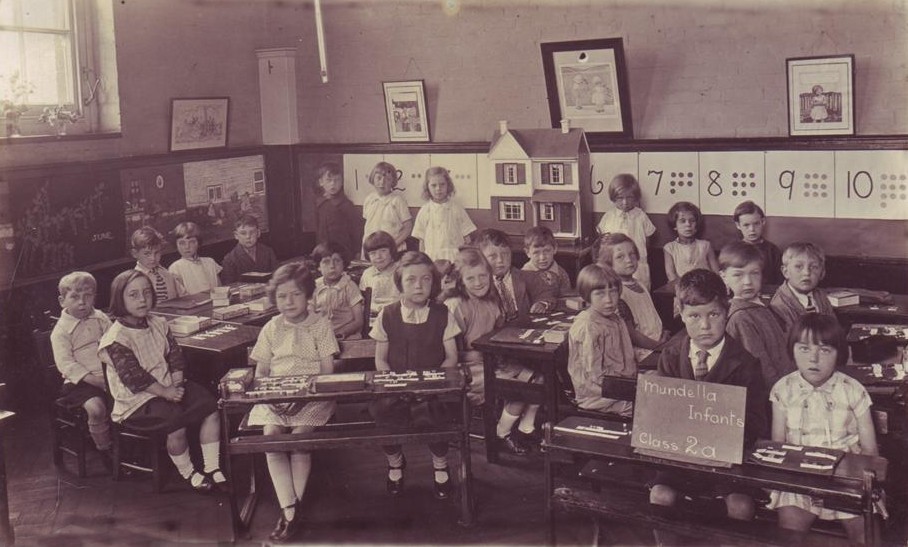
This one of Mundella Infants was taken around 1920. Anybody recognise their parents? Grandparents?
This is a photo taken of the whole of Harcourt School for Girls in 1959. We had to sit in a semi-circle and the camera panned from one end to the other. The finished product was a photo so long that I could never afford to get it framed - and if I could afford it, where would I hang a photo that size? Anyway, I had to scan it in sections, which wasn't easy, and I apologise to the people I have cut in half. If you think you might be in it, just click on the section you were sitting, and it will bring up a larger version of that section. Unfortunately, the photo has become cracked in places over the years, but not surprising since it has been carted from England to Canada plus it is over 50 years old! I was in my final year there, and was sitting in the second row up in the far right section. Not saying which is me, but I am the one with the worst haircut in the world! :-)
Eureka! We have our answers! This is taken from an e-mail I received from Nick Paine:
Rosalie Hairstylists was on the first floor above the Tobacco shop (which later became Botsfords) with a gents salon at the rear and a ladies salon at the front. Mr. Seward was a little correct when he stated it related to a Mr. and Mrs. Paine but he was a generation out.
My name is Nicholas (Nick) Paine and it was in fact my grandparents, Rosa and Charles Paine, who were involved. I can supply the following information:
Mr. Charles Paine opened his first salon (a gents only) at 110 Sandgate Road in 1936. From these premises, I understand he ran small salons at both the Grand and The Wampach Hotels. (Probably on a couple of half days a week but he used to talk of working until 8pm grooming gents for Dinner after the races etc. and of course Military gents as well).
Mrs. Rosa Paine opened a ladies only salon in 1939 at 256 Cheriton Road in Morehall. This was the first time the name "Rosalie" was used (derived from Rosa and Charlie).
In 1941, the Sandgate Road shop closed and the two businesses amalgamated. The premises were not big enough and in December 1945, the whole new business moved to 102 Cheriton Road (Central Station). My Grandfather ran the gents and my Grandmother ran the ladies. It was in the next couple of years that my Father, Mr. Kenneth (Ken) Paine gave up as a professional musician (Drummer) and joined in with the ladies salon to help my Grandmother, as after the War, the business went from strength to strength.
People still tell me they remember standing in the red tiled entrance to the shop, waiting for a bus when the bus shelter was full. They always seem to remember the array of perfumed smells coming from the activities upstairs! The Mr. and Mrs. Paine Mr. Seward refers to were my Father and step-mother (June) who were connected with the History Society and did in fact die in February 2010 - 3 days apart.
My stepmother June's maiden name was Patey and will be remembered from roles at Boots, Peter Poole (Morehall Chemist) and Barry Butler (Central Station Chemist). June was, in her later working life, well known in Hythe for her duties with Rediffusion.
In 1968, my Grandparents both retired and my Father took over the sole running of the business. The shop relocated to 4 Bournemouth Road, with living accommodation above. Following a period of serious illness in the early 70's, June helped him with the overall running of the business. Ken continued with the management of the shop until his retirement in 1988, upon which "Rosalie" was closed.
I would just mention that above the Central Station "Rosalie" there was a flat in which a Scots couple lived but I can't remember their name.
I hope all this information helps your web site visitors to be able to piece together some pictures of yesteryear.
Thank you so much Nick!
***** Now I would like to ask those of you who had a Folkestone nurse in your family tree to look carefully at this photo. If you need to look at it more closely, you can click on it, and use your back button to return here.
This photo was sent to me by Ivor Body, who is in his eighties, and has been working on his family tree for some time. He knows his aunt, Grace Elizabeth Body is one of these nurses, but doesn't know which one. He would also like to know which hospital it was. He suspects it was taken in the 1920's or 1930's.
He was telling me that sadly none of his family are interested in owning the original of this photograph after he has gone, so he would like it to go to someone who will treasure it.
Was it the Royal Victoria Hospital? Or was it possibly one of the military hospitals that sprang up to cope with the injured during the first world war? If you have any information at all, you can reach Ivor at i.body@sky.com

OK, now we need your help. Hazel Gilmore found this photo among her family things, and the only identification it has is that it is the Folkestone Lodge of the London and Provincial Friendly Society, and she thinks she can decipher a date of 1913. Does anyone have any information on this particular branch of the society? Do you recognise anyone in the photograph?
Apparently Friendly Societies were originally established as a form of insurance/pensions/savings or cooperative banking company. Some were purely financial, and others incorporated a ceremonial side to it. By all accounts, this was how organizations like the Independent Order of Foresters, or the Independent Order of Odd Fellows, or the Knights of Columbus first started. They usually were comprised of different professions, so services could be exchanged between members when needed. They took care of their members and their families at time of sickness or death, paying for the funeral, and if funds were left, they would go to the widow. There were also Female Friendly Societies, but they were mostly in areas where a large proportion of women were engaged in employment. Some of these societies morphed into banks, large insurance companies or the modern Credit Unions in North America. Others moved more towards the charity side of things.
This is something I have never done before, and may never do again, but Josie Campbell wrote to me about her Folkestone relatives, the Major family of butchers and the Dunk family of builders, These two families were household names in Folkestone for several generations, and Catherine Major, above, married William Dunk, son of the William Dunk who started the well known building firm. I urge you to check out their page, because Catherine kept a very detailed diary of her daily life in Tontine Street, Folkestone in the late 1800's and early 1900's, and Josie has given me permission to reprint snippets from it. Clicking either of the above photos will take you to their very interesting lives.
William Henry Major 1828 - 1895
Catherine Ann (Major) Dunk 1854 - 1929

Jean Adams sent me this lovely photo of her family, taken near the Sunny Sands in the late 50's. She and her brother are seated, and they are with their Mother, Aunt and cousins. (If that was a professional photographer, I really think he should have removed the dead monkey on the left before taking the picture! LOL!!

This is another photograph sent to me by Iain Crump, it is of his Grandmother, but I am not absolutely sure if it is also the same Grandmother, Emily Hart who is mentioned above as running the sweet shop in Guildhall Street. This photo was taken outside Maison Cree which was located near Parson's Library at the top end of Sandgate Road.




Walter Tull, the son of a joiner, was born in Folkestone in April 1888 Walter's father, the son of a slave, had arrived from Barbados in 1876. In 1895, when Walter was seven, his mother died. Walter's father remarried but he died two years later. The stepmother was unable to cope with all six children and Walter and his brother Edward were sent to a Methodist run orphanage in Bethnal Green, London.
Walter was a keen footballer and played for a local team in Clapton. In 1908 Walter's talents were discovered by a scout from Tottenham Hotspur and the club decided to sign this promising young footballer. He played for Tottenham until 1910, when he was transferred for a large fee to Northampton Town. Walter was the first black outfield player to play professional football in Britain.
When the First World War broke out, Walter abandoned his football career to join the 17th (1st Football) Battalion of the Middlesex Regiment.
To read the full story of this amazing man, check out this website: Walter Tull
What it doesn't tell you on that page is that Walter Tull was born at 16 Allendale Street in Folkestone on 28th April 1888, but on the 1891 census, the family had moved to 51 Walton Rd. His grandfather was a slave in Barbados. His father, came to Britain in 1876 and married Alice from Hougham and they had six children. Walter attended the North Board school (now Mundella Primary school)
Another interesting BBC documentary about Walter's life can be seen here on You Tube. It is narrated by Nicholas Bailey, who used to play Dr. Anthony Trueman on EastEnders.
Another docu-drama, or dramamentary as Jan Pedersen, who alerted me to it, is 'Walter's War' which was also produced by the BBC. I enjoyed this very much too.
There was a petition in 2013 calling upon the government to posthumously award Walter Tull the Military Cross for which he was recommended. It received 3,301 signatures, but I haven't heard if it was ever done.

We mentioned above that Steve Walker and his young friends considered Nina Arghyrou, whose parents owned George's Restaurant in Tontine Street, to be the prettiest girl in Folkestone, and they were not wrong were they? Here she is as she was back then. We have discovered that Nina, whose married name is Sansome, went on to invent the 'Cobra Throwing Stick', a 'must have' device that enabled carp anglers to bait with boilies to the range of 100+metres. With buyers all over the world. Nina became known as Madame Cobra. She is retired now, having sold her business to Kevin Nash, who updated them and put his own unique stamp on them.


Here is a video of Kevin Nash talking about buying Nina's company, and showing the changes he has made to her throwing stick.

This is George Lewis Terry, born 1889, and the photo was sent to me by his Grand-nephew Martin Harrison, who used to live in Linden Crescent between 1950 and 1970. On the collar of George's uniform is F.A.A. which he tells me was the Folkestone Amusement Association. This company ran the Leas Shelter, forerunner to the Leas Cliff Hall, and had an orchestra playing there daily. So quite possibly George was a member of this orchestra, and this was the uniform of the day. In fact, I magnified the photo, and it seems to me that there are musical notes embroidered in the strip just above his sagging pocket. Thank you for letting us see this Martin.
Received a message in my guestbook from Jane Spall about the photo above: "The photograph of Mundella Primary shows my father, he is the little lad with the white bandage on his head. I'm guessing the year would have been about 1927/8 as he was born in 1923" Thank you Jane, I hope his injury wasn't too severe.

Jane Regan
Barbara Ball
Rosemary Turner
Lynn McMurran
Virginia Willoughby
Ann Hoskins
Wendy
Susan Longley
Jennifer Schaffer (Davidson)
I was quite excited when a Facebook friend by the name of Virginia Willoughby put this photo on the site, because although I didn't go to Christchurch School in Brockman Road, I did recognise a few fellow classmates from Harcourt. If you are in this picture and would like to be tagged, please let me know. The picture was taken in 1953, and Virginia tells me they were moved there from the Gun School, which is now the multi-storey carpark in town.

This was the Chatsworth Boarding House, and these were some of the guests staying there in 1925. However, I am not sure where it was located.

There used to be a lot of farms in Folkestone, and here are a couple depicted on a 1911 ornate postcard. The top picture is entitled 'The Last Load', and the bottom one is 'Glorious Autumn'.

I bought this photo at auction because it seemed sad to me that this little girl is not sitting in the family tree of her family. The photo was taken by Lambert Western in Folkestone, and her name is Peggy Dewhurst. I wondered if she was related to the butchers by that name, but I think they are a chain of butchers, not originally from Folkestone - but I could be wrong. If she is a relative of yours, and want the original photograph, please drop me a line and I will send it to you.

Another one of Folkestone's first lady. St. Eanswythe, whose story is further up this page. The card is dated 1941, but the lady dates from 630 AD.



People having fun on the Switchback Railway, which eventually became unsafe and had to be dismantled. Not surprising considering it was right on the West Beach, and stood in crashing waves each time the tide came in. First roller coaster flume?
The International Staff Songsters from 1908. I am assuming this was the choir of the International Stores
I was thrilled to get my hands on this one. It was obviously a charabanc outing - possibly involving pubs as they were parked outside the Wonder Tavern on Beach Street here. I think that is probably Castles Yard in the distant background, now demolished. In fact probably every building in this picture is now demolished. Note the Pavilion Livery Stables, I am wondering if that is where the guests of the Royal Pavilion stabled their horses during their stay? I have noticed on several old cards that the hotel on the seafront was just called The Pavilion, maybe it only acquired it's 'Royal' status after a member of Royalty stayed there.
This 1931 newspaper article in the Folkestone Herald talks about the Folkestone Trinity Young People and their fancy dress ball and parade with prizes for the winners. Within the yellow circle is the name of Master David Tomlinson, who won 6th prize for going as a plum pudding. He didn't do as well as his cross-dressing brother Paul, who won 4th prize as a crinoline lady.
This gem comes to us from Mark Hourahane, thank you Mark! I have made the article clickable so you can read the relevant bits for yourself.

Jo Nyirenda wrote to me saying their Great Aunt Thirza Prior used to run lodgings at 34 Cheriton Road Folkestone. When she died in 1935 aged 87 her obituary said she had lived there for 50 years. If she was running lodgings all those years, there must have been hundreds of people coming and going from there.

Above is 34 Cheriton Rd in 1908, and to the right is the same address in 2016. It's looking well looked after, but would imagine it is all flats these days, including the basement as they have added a separate entrance to it. Jo was saying she would love to see what it looks like inside, but hasn't plucked up the nerve to knock on the door. You can see that Great Aunt Thirza was sitting inside that bay window, that is still there. Thanks Jo, it's really interesting, and I do hope you get to see inside one day!
This was Lady Elizabeth Forbes, 1711 - 1782. Viscountess Folkestone, and this was drawn and etched from an original work by Thomas Gainsborough.

These two were men of the cloth in Folkestone, but I don't know where.
The man on the left was Rev. H. Wheeler, and the one on the right was referred to on the postcard as 'Our Dear Vicar' in 1908. So if anyone has any information on either of these men, I would appreciate hearing from you.

Jan Pedersen of Folkestone sent me this scan of a cigarette card he recently bought, so had to add it immediately. As you can see, it depicts Walter when he was a Football star for Northampton. Thanks Jan, it's a great addition to Walter's story.
Now, did you know it is possible see Folkestone's oldest known inhabitant in person? Her name is Aefre, and she was born at least fifteen hundred years ago. If you lived in Folkestone as a child, no doubt you were taken with the school to the Museum to see this Saxon woman, who died between the age of 30 to 40 and was dug up in 1906 from a Dover hill burial site. The Folkestone Museum has moved from Grace Hill and has a new home inside the old Town Hall in Guildhall Street. Fragments of a rib and a tooth from Aefre were sent away for more accurate testing, using carbon dating and DNA, to find out more about her, and what kind of life she led all those years ago. I haven't heard the results of that, so if you know, please drop me a line.
They have had an osteo-archeologist since examine her bones and confirm that she is not one, but two skeletons (she is mostly one female skeleton with bits of other bones used here and here to complete her). She is also possibly a very early 5th century Anglo-Saxon that migrated down from the north rather than up through Germany.
If you would like to read more about this exciting work, and to keep up to date on their progress, I urge you to like their Facebook page

Aefre, Anglo Saxon Skeleton, Image courtesy of Folkestone Museum and Matt Rowe.

13 Guildhall Street in 2023, the frontage has been changed, and personally I think it looked much better the way it used to be, and obviously has more window space now than the current business needs.
319 Cheriton Road in 2016, Fullicks have taken over the shop next door as well. Checked again in 2023, and they are still there!
Harcourt has been Pent Valley College for some years. No longer an all-girls school. It was closed in the summer of 2017, and was re-opened in September of that year as a new free school - the first new secondary school in Folkestone for 10 years - it has been given to Turner Schools.
The trust already runs two primary schools in Folkestone - Martello Academy and Morehall Academy - and say they will act as "feeders" for the new secondary. As I understand it, a free school is one that is not run by the KCC, but is funded just the same by the tax payers. It was decided to close the College due to rising debts, falling pupil numbers and low exam results.
The three photos above were sent to me by David Santry. Top left is of James St John Santry and a friend playing on the sands in the late 20's or early 30's. The other two were taken at the time of the Silver Jubilee of King George V, which was in 1935, and the top right is of Pat Santry, taken in the garden of their house, Martello Villa, Canterbury Road, Hawkinge. The one below is James again, showing off his bike decorated for the Jubilee in a field on Plowman's Farm. Their house can be seen in the left of the photo.
Ronald Langley

Lilly Sharp
Unfortunately the sound has been removed from the above videos due to copyright issues.
February 21st 2018 was the 60th anniversary of the design of the ND or CND logo, sometimes better known as the 'Ban the Bomb' symbol. Americans will call it the peace symbol.
It was designed by Gerald Holtom and presented to the Direct Action Committee Against Nuclear War (DAC) in the Peace News offices in Twickenham on 21 February 1958. The DAC used it for their (kinda) first London to Aldermaston March, where it was printed on lollipops and other banners. The marches got bigger and the logo soon became used across the globe, and took on new meanings for other groups, including being a popular symbol of peace in America throughout the Sixties. Most famously in recent times, Jean Jullien adapted it with an image of the Eiffel Tower following the November 2015 Paris attacks including the Bataclan shooting to make the "Peace for Paris" symbol. Once again, it was a symbol that needed no explanation.
Why is this a story of local interest? Well, Gerald moved to Hythe in 1962, where he lived and continued to work as a designer until his death in 1985. He is buried in Spring Lane cemetery in Seabrook.
Mark Hourahane visited his grave, and found his headstone was getting unreadable - quite sad after not much more than 30 years. he managed to get in touch with his daughter, Rebecca Holtom, an artist who now lives in France. She gave him permission to clean the headstone and asked if he could prune the rose bush she had planted. So he and his Dad Peter went along, cleaned the gravestone and cut the bush back. Here are the results.





Nuclear Disarmament


The Pierots put on a very entertaining performance right on the West Beach, then I imagine a hat would be passed around to collect payment from the audience. I would guess the sender of this card was related to a couple of the boys, as they are marked with a cross. Brothers perhaps? The card showing them performing is entitled East Beach, which in those days meant the part of the beach East of the Victoria Pier. The Sunny Sands hadn't yet been developed.


This lovely photograph of the pupils of Downs School working on their model boats was sent to me by Diane Hagan. Thanks to Paul Seward, I know this school was open during the 1920's and was located in Radnor Park Avenue.
Who remembers this fabulous little train? This photo was kindly sent to me by Lynne Ewart, who was Lynne Rye, along with her sister Janet Rye when this was taken by their father Eddy Rye around 1961. You can see the now demolished Marine Gardens Pavilion in the background. So much fun we had down the seafront in those days, a great place for kids! Thank you Lynne.
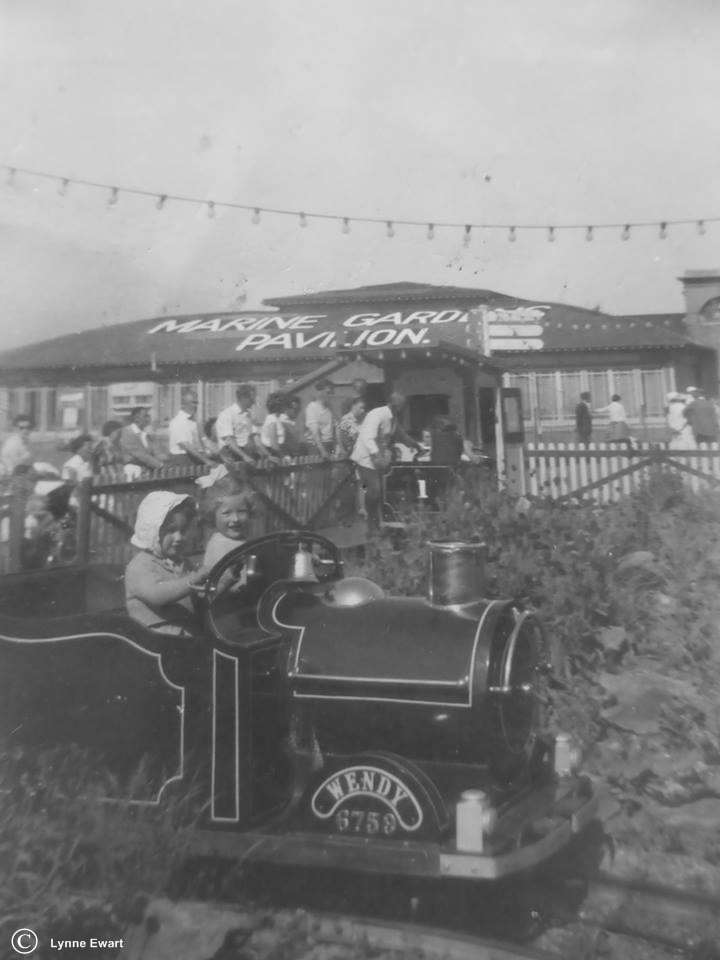

So do you recognise anybody here? This is another one sent by Lynne Ewart, and here is what she says: "Folkestone Town Football Club, Boxing Day 1919. My grandfather, Arthur Rye, is second left in the front row (first person in football kit). He had only returned to Folkestone just a few months earlier, in August, after serving with the RAMC during WW1. The gentleman standing in the middle is Sir Philip Sassoon. This match was a big one in the sporting year.
After this photo was originally posted on Facebook, Graham and Jean Reed's Grandfather was also spotted, this is what they said: "The player seated third in from the right was our Grandfather, Tommy Arnold, and the player directly behind him was his brother Fred. Fred had the greengrocers at the top of Bridge Street." As an added interest, I was told Graham's eldest son played for Folkestone Town like his great-grandfather Tommy, and he was the last Captain of the team when it was disbanded.
Also, in the back row, second from the right is Eddie Rumbold, Grandfather of Viv Kenny.
So now we know four of these players, anyone else recognise their relative?
Photo by Hawksworth Wheeler


This looks like a few men on a mission. I think a pub crawl is on the cards, starting with the British Lion, don't you? It must be just starting, they are not falling out of the charabanc yet!
H.G. Wells & wife Sarah

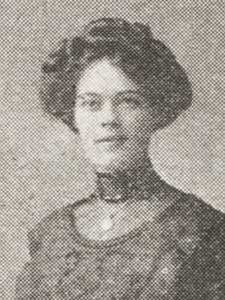

Tommy Arnold
Fred Arnold
Arthur Rye
Eddie Rumbold
I am adding this to the People page in case someone has A. A. Bayliss in their family tree. In my notes it says he was located on Cheriton Road, but I cannot find him in any of my directories, but then I don't have a directory for every year either. I would date it to approximately 1885 - 1910, and on this day he was doing a roaring trade on potatoes.


On the Buildings page we have a postcard from a boy staying in this building on the corner of the Durlocks and East Cliff Gardens. It was a nursing home for boys, affiliated with the St. Andrews Nursing home that you can see across the street. Did they have a nursing home just for girls? If they did, I haven't come across it yet.

Here is the same building, looking in very good shape in 2023. Not sure if it is a single home now, divided into flats or still some kind of nursing home. If anyone knows, I would love to hear.

I love this photo, the girls all look so happy to be getting an hour of rest outside the Sanitary Steam Laundry in Cheriton. Now, was this the same laundry as Foster's? It looks like the same area, with the cottages for the girls, but I am really not sure. Do you know?

Although I always knew of Morehall School in Cheriton as an all boys school, it obviously wasn't always thus, in fact it was an all girls' school for thirty years, from the time it opened in 1909 until 1939. I don't have an exact date for this photograph, but would guess by the dropped waistline of the uniforms that it dates from some time in the 1920's. With many thanks for the dates to Vince Williams, the guru on all things Cheriton.

This character by the name of Mr. May, was sent to me by Gareth Simmons some time ago, and unfortunately I can no longer find any information Gareth may have given me about him. I know he was a Folkestone road sweeper, but that is all. I am wondering if he was related to the large May family of fishermen? Any information gratefully received.

I know even less about this handsome chap, I always think it's a shame when I see a photo for sale on e-bay, and the seller has bought it in a job lot of photos, with no information on it. All I know about this fellow is that he was a special constable in Folkestone. Was he perhaps one of Lord Radnor's police force? Who was he, and why did his family not treasure his photograph? If anyone can claim him as a relative, please let me know.
My word it's hard to keep up with the goings on in Folkestone. Just found out in 2023 that Harcourt/Pent Valley has been demolished, and a new school has been built, not sure if it is finished yet, but will add a photo when I get one.
Now we have talked about this fellow before, but this is a photograph that I took of the portrait of a statue of William Harvey that used to hang in the restaurant of Debenham's, or the Folca building as it is now called.












